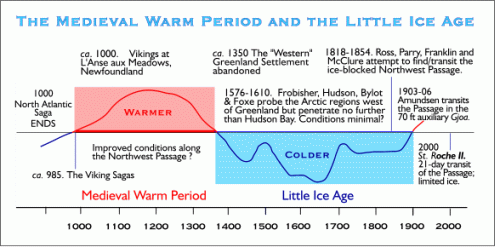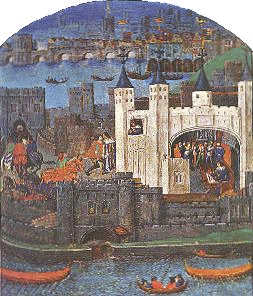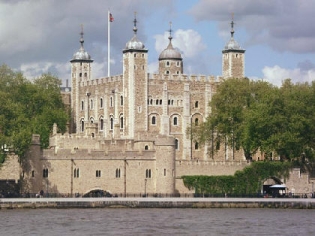
What
about Greenland??
Global Warming proponents claim
that this ‘imminent crisis’ will cause a massive rise in
sea level which will drown many of the worlds largest cities and
displace hundreds of millions of people. In his Academy Award winning
‘documentary’ Al Gore claimed that if either the
West Antarctic Ice Shelf or the ice sheets around Greenland melt the
mean global sea level will rise by 20 feet! Greenpeace
claims that GW will “result
in a catastrophic global sea level rise of 7 meters. That's bye-bye
most of Bangladesh, Netherlands, Florida and would make London the
new Atlantis.”
Likewise the WWF
claims “If
the Greenland ice sheet melts, sea level could rise by as much 25
feet. Today there are 17 million people living less than one meter
above sea level in Bangladesh, while places like Florida and
Louisiana in the United States, Bangkok, Calcutta, Dhaka and Manila
are also at risk from sea level rise.” This threat
of ‘catastrophic sea level rise’ is a mantra constantly
repeated by GW alarmists and forms the heart of their demand for
urgent drastic action. But is this ‘threat’ well-founded
or just fear-mongering by those pursing the Global Green Agenda?
Below are a temperature graph and extracts from scientific papers and
articles that provide a very interesting insight into the recent
history of Greenland’s climate.

~~~~~~~~~~~~~~~~~~~~~~~~~~~~~~~
In AD 1000, the Earth was
experiencing an episode of climate warming similar to that of the
present day. Temperatures in many parts of the world seem to have
risen by at least two or three degrees Fahrenheit. Although the scale
of this "global warming" may seem small, its effects on
human societies were profound. In Europe, several centuries of long
hot summers led to an almost unbroken string of good harvests, and
both urban and rural populations began to grow. These centuries are
known as the Medieval Warm Period. One of the more dramatic
consequences of the Medieval Warm Period was the expansion of Viking
settlements in the North Atlantic. From their Icelandic base
(established in AD 870), the Norse people began to move west and
north to Greenland, Canada, and eventually above the Arctic
Circle.
LINK
The
Medieval Warm Period was a time of warm weather around 800-1300 AD,
during the European Medieval period. Initial research on the MWP and
the following Little Ice Age (LIA) was largely done in Europe, where
the phenomenon was most obvious and clearly documented. The Vikings
took advantage of ice-free seas to colonize Greenland and other
outlying lands of the far north.
LINK
"The
climate at this time was very warm, much warmer than it is today,
and crops were able to do well. It seems likely that the name
"Greenland" was given to the country, not just as
wishful thinking, but because it was a climatic fact at that
time. The mild climatic period was fairly short-lived in
geologic terms - by about 1200 AD, the ever-increasing cold was
making life extremely difficult, and some years no supply ships were
able to reach Greenland through the ice-choked seas. During this
period, Norway had assumed responsibility for supplying the Norse
settlers in Greenland, but as the climate worsened it became a very
difficult task.
LINK
"At
that time, the inner regions of the long fjords where the settlements
where located were very different from today. Excavations show that
there were considerable birch woods with trees up to 4 to 6 meters
high in the area around the inner parts of the Tunuliarfik- and
Aniaaq-fjords, the central area of the Eastern settlement, and the
hills were grown with grass and willow brushes. This was due to
the medieval climate optimum. The Norse soon changed the
vegetation by cutting down the trees to use as building material and
for heating and by extensive sheep and goat grazing during summer and
winter. The climate in Greenland was much warmer during the
first centuries of settlement but became increasingly colder in the
14th and 15th centuries with the approaching period of colder weather
known as the Little Ice Age."
LINK
The
Medieval Warm Period coincides with the Vikings' settlement of
Greenland, Iceland and possibly North America. Farmsteads with dairy
cattle, pigs, sheep and goats were prevalent in Iceland and along the
southern coast of Greenland. Even England was able to
compete economically with France in wine production. On the other
hand, agriculture steadily declined at higher latitudes during the
Little Ice Age, while mortality rates and famines increased. By 1500,
settlements in Greenland had vanished and the inhabitants of Iceland
were struggling to survive.
LINK
During the 9th & 10th
centuries the Vikings reached Iceland and Greenland during the milder
condition that prevailed during Medieval Warm Period. Norse settlers
arrived in Iceland in the 9th and Greenland in the 10th century with
an agricultural practice based on milk, meat and fibre from cattle,
sheep, and goats. The settlers were attracted by green fields and
a relatively good
climate and driven
there by population pressures in Scandinavia. They were able to
sail to Iceland and Greenland as well as Labrador because of a
decrease in sea ice in the North Atlantic.
LINK
The
Medieval Warm Period was a time of unusually warm climate in Europe
from about 850 until 1250 AD. The warm climate overlaps with a time
of high solar activity called the Medieval Maximum. The warmer
climate caused historic events such as the spread of Viking
settlements in Northern Europe. The Vikings were likely better able
to explore and colonize many areas in Northern Europe during this
time because the warm climate. They traveled by boats to Greenland
among other places through seas that, with cooler climates are
typically full of dangerous sea ice. During this time, grape
vineyards, which require moderate temperatures and a long growing
season, were as far north as England. In comparison, today grapes
vineyards are only typically as far north as France in Europe.
LINK
Between
the 9th and 14th century there was a "Medieval Warm Period",
when the average temperature in the Northern Hemisphere reached its
highest point in the past 4,000 years, which was only about 1°C
higher than at present. It has been documented that during this
period, American oysters (Crassostrea virginica) and bay
scallops (Aequipecten irradiens) formed populations as far
north as Sable Island. Neither of these species exists there
today. Radiocarbon dating of relict oyster and bay scallop shells
compare reasonably well with the dates of the post-glacial warm
period. From the 16th to the 19th century there was a "Little
Ice Age", when the average temperature of the Northern
Hemisphere was a degree or two cooler than now. It is during this
time that salmon are hypothesized to have relocated to the New
England area. Salmon may have migrated from Europe after the end of
the Pleistocene, across the Atlantic. Immediately prior to the Little
Ice Age, the Medieval Warm Period diminished sea pack ice around
Iceland and Greenland.
LINK
~~~~~~~~~~~~~~~~~~~~~~~~~~~~~~~
As quoted above Greenpeace claims
that if the ice shelf around Greenland melts London will become ‘the
new Atlantis’ .This
dire prediction about the future of London can be found in many
‘Global Warming Impact Assessments’ even one from the
London
City Council.
But
as we have seen above the ice sheets around Greenland were largely
absent as little as 950 years ago during the Medieval Warm Period.
Interestingly there is no evidence of a rise in sea level
during this period. In fact there is plenty of evidence that the
sea levels were the same as they are today! Science and culture
flourished during this period. We have many great works of literature
by authors like Chaucer and Thomas Aquinas were penned and preserved.
I think someone, somewhere would have recorded a massive 20 foot sea
level rise!!
Also many sea-ports, complete with docks and
mooring rings, were constructed during this period. Now, if the sea
level was 20 feet higher when they were constructed then surely they
should now be stranded high and dry. But the remnants of medieval
seaports at Acre, Bristol, Genoa, Tripoli, Istanbul etc can be found
sitting quietly at today’s sea level. The Polar Bears obviously
survived being ‘drowned’ as well.
So let’s
take a closer look at one of these structures built at sea level
during the height of the Medieval Warm Period. Remember, the lack of
ice around Greenland at this time has been well documented by many
sources. William the Conqueror began building,
what is now known as the Tower of London, in 1078. The Tower
is situated on the north bank of the river Thames, within the tidal
section at the eastern extremity of London. There were no
flood-control locks at this time, the first being built in 1633. The
Tower was constructed a few feet above the high tide mark and still
sits a few feet above the high tide mark. Many tapestries and
paintings of the Tower shortly after its completion show that the sea
level has not changed!

Tower of London - 1150 A.D.

Tower of London - 2005 A.D.
This
raises another issue with the 'man-made' theory of global warming.
Almost all ice core records show that carbon dioxide levels begin to
rise approximately 800 years after temperature begins to rise.
This is why Al Gore didn't superimpose his CO2/temp graphs in his
'documentary'. Even the mega-alarmists at the RealClimate site admit
this:
“At least three careful
ice core studies have shown that CO2 starts to rise about 800 years
(600-1000 years) after Antarctic temperature during glacial
terminations... The reason has to do with the fact that the warmings
take about 5000 years to be complete. The lag is only 800 years. All
that the lag shows is that CO2 did not cause the first 800 years of
warming, out of the 5000 year trend. The other 4200 years of warming
could in fact have been caused by CO2, as far as we can tell from
this ice core data. The 4200 years of warming make up about 5/6 of
the total warming. So CO2 could have caused the last 5/6 of the
warming, but could not have caused the first 1/6 of the warming.“
- link
So,
according to them 'something else' (maybe the sun!) caused
temperatures to rise and 800 years later CO2 levels rose and 'could
have caused the rest of the warming'. Hmm ... so why
could the 'thing' that caused the initial warming not have also
caused the rest? Seems more likely. This 800 year lag can be
explained by a phenomenon known as Deep Ocean
Thermal Inertia.
Only the top 70m of the ocean is mixed by wave and wind action, the
rest of the up to 10,000 meters of ocean experiences relatively
little water exchange. When the surface of the ocean is warmed the
heat is absorbed and very slowly travels down through the water
column. You can actually measure
temperature strata
somewhat analagous to tree rings. Scientists refer to this as 'oceanic memory'.
The ocean contains
more
than 50 times as
much CO2 as the atmosphere. Most of this is stored in the very cold
benthic layers of the ocean. The solubility of CO2 in water depends
on temperature. The
warmer the water temperature the less CO2 it can dissolve. Hence as
the ocean depths are warmed C02 is released. This is known as oceanic
out-gassing. You can test this yourself by heating a bottle of coke.
Given that humans contribute only a tiny fraction (<1%) of the
annual carbon flux, any change in the huge amount of CO2 dissolved in
the ocean would far outwiegh our effect. As shown by ice core data,
temperature and CO2 levels are correlated but with a 800 year lag due
to the time it takes for the increased atmospheric heat to reach the
ocean depths. In effect you can take a temperature graph, move it
forward 800 years, and you have a pretty accurate CO2 graph.
So,
as outlined in this article during the period 1000-1300 AD the earth
was experiencing the Medieval Warm Period which was even warmer than
current temperatures. Hence we would expect CO2 levels to rise
during the 1800-2100 AD period. Why would the 800 year lag
suddenly stop operating? Shortly after the MWP global temperatures
plummeted and the Little Ice Age began. We can expect this cooling
influence to affect the ocean depths shortly after the end of this
century which will trigger additional carbon absorption and remove
CO2 from the atmosphere.